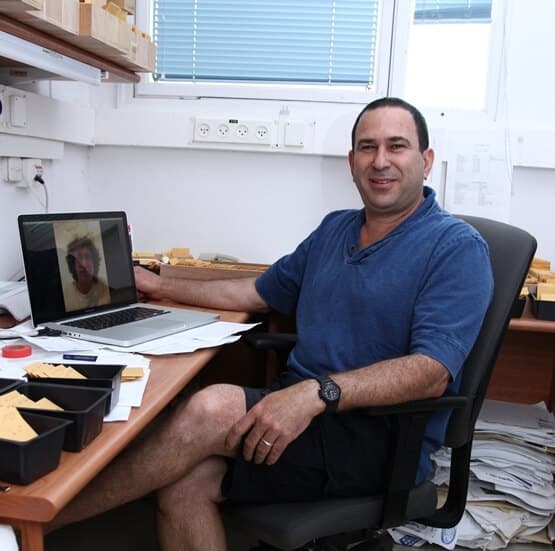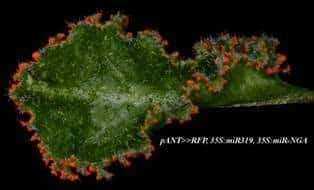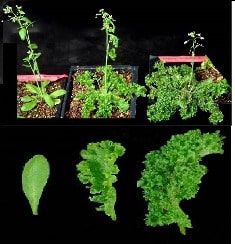The size of the elephant's ears is tens of times greater than that of the human ears, but each of them has a finite size, which is more or less constant in all details. During evolution there are dramatic changes in the size of organs

The size of the elephant's ears is tens of times greater than that of the human ears, but each of them has a finite size, which is more or less constant in all details. During evolution, there are dramatic changes in the size of organs: cabbage leaves, for example, are ten times larger than those of its relative, the white thorn (Arabidopsis thaliana). How is the final size of the organs determined? How do organs measure their size? And what makes them stop growing? A team of scientists, led by Prof. Yuval Ashad from the Department of Plant Sciences at the Institute, who set out to investigate these questions, discovered surprising findings. It turns out that when it comes to the growth of leaves, the "brake" pedal is more important than the "gas" pedal: the purpose of most of the mechanisms related to growth control is to stop and not encourage it.
The source of the surprising discovery is in a study that actually sought to test another question: what causes a leaf to start growing. The beginning of growth is not an automatic and self-evident event. In order for it to occur, a primary structure must be created for the leaf, in which there is a division into a lower side and an upper side; It is the interplay between the two parties that causes growth to begin. Interestingly, the fly's wing, another example of a two-dimensional organ, also grows due to interactions between its two sides. In the study, published in the scientific journal The Plant Cell, which was carried out by the research students (at the time) Dr. Idan Afroni and Dr. Eyal Blum, the scientists sought to examine exactly how this happens.
To this end, using genetic engineering methods, they created leaves with a single cell type, those of the upper or lower side, which do not grow, and compared them to normal leaves. In this comparison, dozens of proteins were discovered that are expressed only in the growing, normal leaves, and not in non-growing, single-sided leaves. In the second stage, to try to confirm the role of the proteins they discovered, the scientists created a series of genetically modified plants, in each of which a large amount of one of these proteins was produced, and measured their size. To their surprise, none of the proteins made the leaves grow: half had no effect at all, and half reduced the size of the leaves.

A leaf of a genetically modified plant that does not produce five transcription factors from the TCP family as well as four transcription factors from another family with a similar function. These leaves grow without stopping
These findings made it clear to the scientists that there is an error in their basic assumption, according to which most of the factors found in the developing leaf are what make it grow. To understand the error, a number of proteins found to reduce leaf size were selected, which belong to a family of transcription factors (that is, factors that regulate the expression of genes) called TCP. By combining several genetic methods, the researchers created a plant that does not produce any of the eight members of the TCP family. As a result, there was a huge improvement in the growth capacity of the leaves. The conclusion due to this finding was that the logic of the growth process is the opposite of what the researchers expected: growth is the default of the leaf, and does not require "intention" or special effort, and many factors that regulate it act as brakes. It was also discovered that these regulatory factors work in groups, creating a sequence of "checkpoints" that are activated at different stages of development. The multiple stopping points are essential because the growth process of a leaf takes a long time, sometimes several weeks and months, during which environmental factors that affect growth may change, such as a lack of water and high temperatures (this phenomenon is responsible, among other things, for many wild plants presenting a "winter show" with large leaves, and a "summer show" of small leaves).
In a subsequent study carried out by Dr. Idan Afroni, and published in the scientific journal Developmental Cell, it was discovered how the factors that stop growth work, that is, who are the intermediaries involved in the execution of the order to stop. The scientists suspected the plant hormone cytokinin, which encourages cell division and inhibits their differentiation. The scientists discovered that when the hormone is sprayed on the leaves of genetically modified plants, which produce a larger than normal amount of transcription factors from the TCP family, the leaves do not respond to the hormone and do not grow to the extent that the control plants grew.

How do the transcription factors from the TCP family reduce the leaf's sensitivity to cytokinin, and stop growth? In an experiment done in collaboration with a research group from Pennsylvania, a detailed picture of the mechanism of their activity was revealed. It turns out that the transcription factors from the TCP group recruit a protein to help them, which knows how to reveal certain regions of the genetic sequence by removing the proteins that package it. Their joint action results in the exposure of the DNA sequence of a gene that reduces the degree of sensitivity of the plant to cytokinin, and increased expression of the gene.
This flexible system can be activated at different stages of leaf development, therefore, although the final size of the leaf is kept within a fixed range, fluctuations within the range are possible: the later the stopping mechanism is activated, the larger the leaf will be. In addition, these studies not only reveal in detail mechanisms that regulate plant growth, but also provide a glimpse into the guiding principles of basic developmental processes, revealing that they do not always obey scientists' initial intuition.


5 תגובות
Oops, Yotam, we reacted together
apologies.
Yair,
What do you mean by separating genes from proteins? After all, the genes are the coding for the creation of the proteins. The separation between the two is meaningless. Or did I miss something in your argument
The genes are the ones that make the proteins.
Saying that genes are less important to heredity than proteins is like saying that car factories are less important to traffic than cars.
Another evidence that in the totality of heredity, the share of genes is much smaller than what is accepted, from what biology students are taught, and that the share of environmental and protein factors is very large.
Intuition says that life by nature is to grow and multiply. The regulatory mechanisms are later. as a result of natural selection.